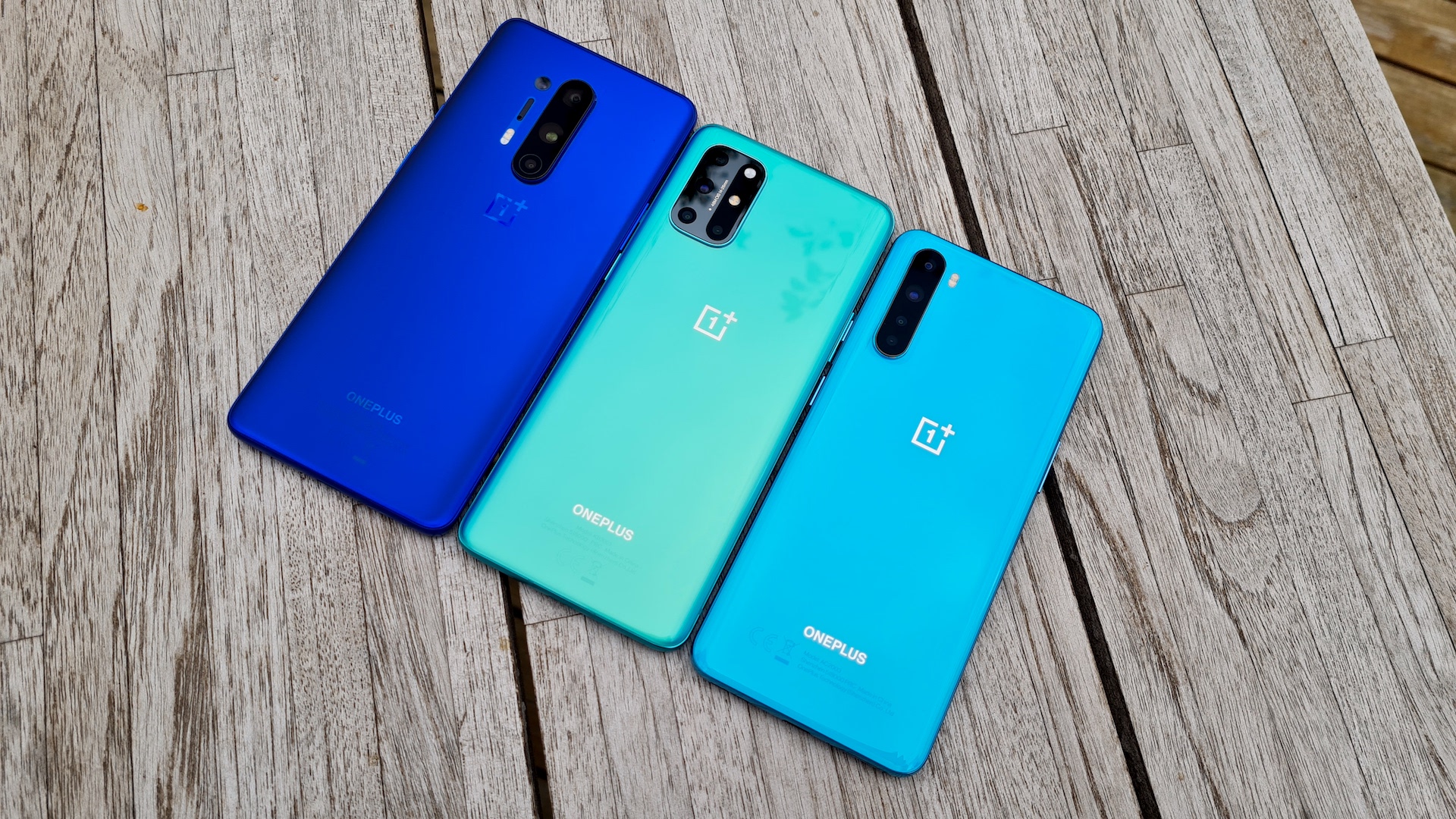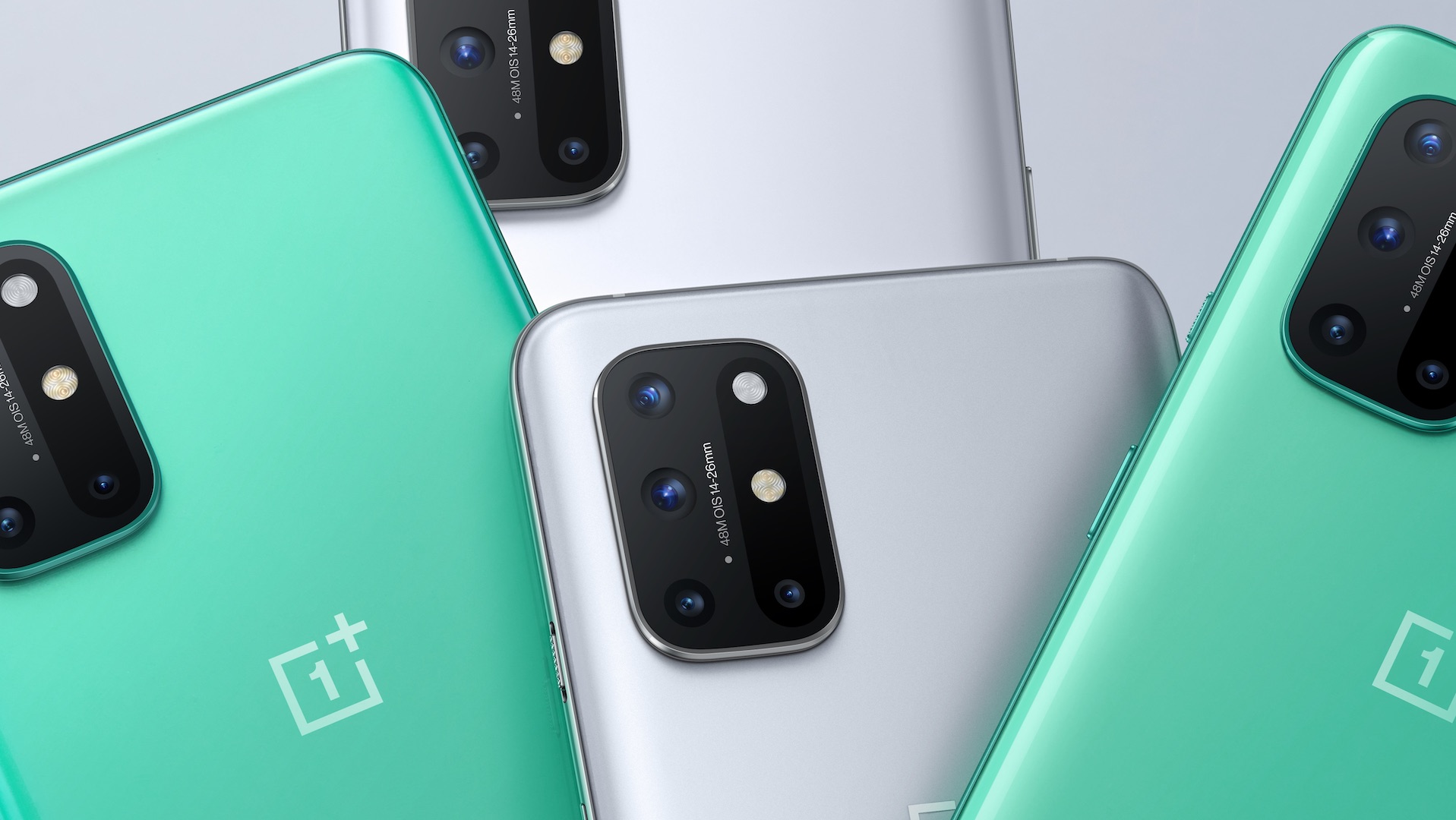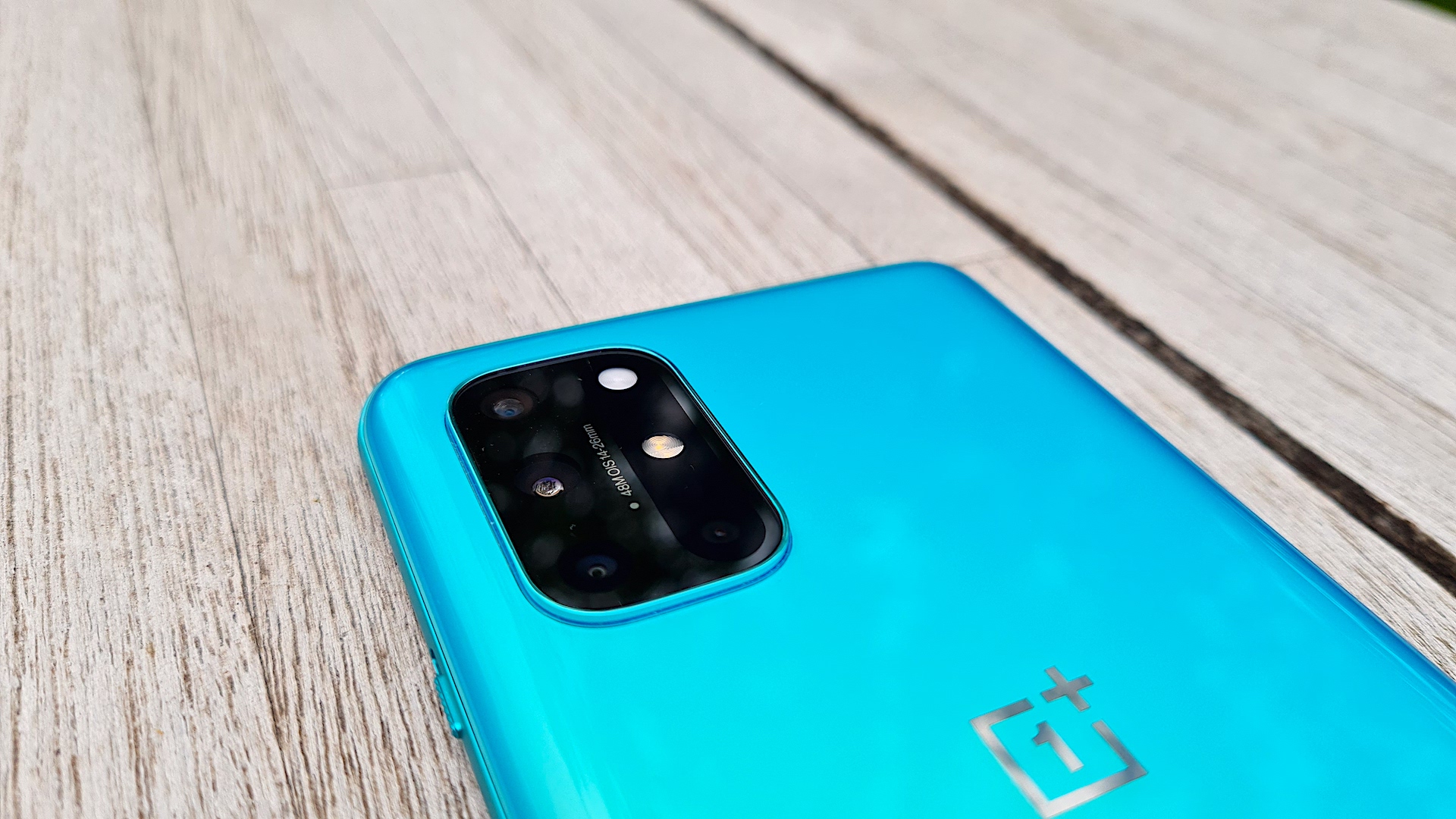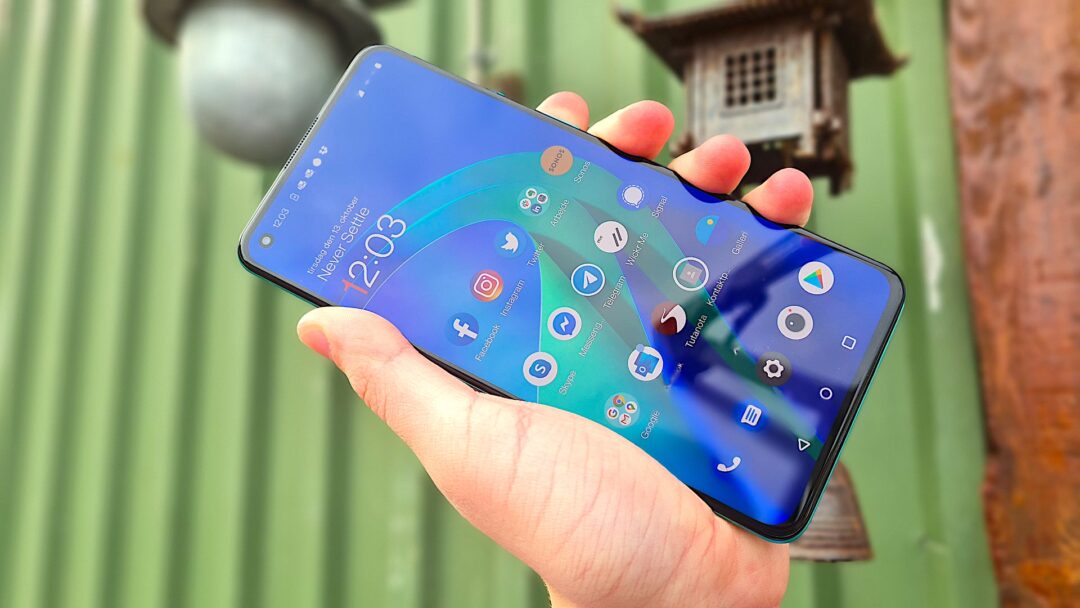Earlier this year, OnePlus launched two phones, OnePlus 8 and OnePlus 8 Pro, the latter of which got all the attention. And that in both the good and the bad way. OnePlus 8 Pro was and is the best smartphone the Chinese company has ever launched on the market, and we have just declared it as the Best Smartphone of the Year 2020/2021 in the high-end class.
Conversely, many of OnePlus ‘very loyal and committed fans were tired of the fact that the company’s mobiles (and in particular OnePlus 8 Pro) had now become so expensive that what was originally the whole of OnePlus’ unique advantage – namely that they manufactured cool and powerful smartphones at a reasonable price – was just a saga.
Therefore, it was also difficult to perceive the launch of the significantly cheaper mid-range mobile OnePlus Nord – which came on the market just a few months after the OnePlus 8 series – as anything other than a strategic shift on the part of OnePlus. Or at least a sign that the popular producer had realized the importance of listening to his most enthusiastic fans.

Now the time has come for the OnePlus 8T, and in contrast to last autumn, where we, among other things. got the excellent OnePlus 7T Pro McLaren Edition, there is no Pro model in the T-Series this time around. The OnePlus 8 Pro is thus still the expensive flagship, while the OnePlus Nord must be a kind of budget model. And the OnePlus 8T? Yeah Al that sounds pretty crap to me, Looks like it’s a flagship diet model that’s upgrading this spring’s regular OnePlus 8 (which we have not tested) by taking over some of the key specs from the OnePlus 8 Pro while saving the hustle and bustle to keep the price down.
Thus, at the time of writing, a OnePlus Nord can be purchased for approx. £ 390 in the most expensive configuration, while OnePlus 8 Pro with top specifications costs £ 799. The new OnePlus 8T with 256 gigabytes of built-in storage and 12 gigabytes of RAM then costs £ 599, which places it well and truly in the middle between the two existing models in terms of price.
The question then is whether that price is rightly set and whether OnePlus has prioritized right when they chopped a heel and cut a toe on the OnePlus 8 Pro to get to the OnePlus 8T.
Appearance and construction
At first glance, the OnePlus 8T budget model looks more like the OnePlus Nord than it does with the flagship OnePlus 8 Pro. The back is made of glossy 3D Gorilla Glass, where the 8 Pro has a characteristic metallic and matte back, and the camera module is rectangular and is located at the top left seen from behind, when the mobile is with the screen down. Just like on the OnePlus North. The camera on the OnePlus 8T is just bigger.
The frame is precisely cut in aluminum, and just like on both the 8 Pro and Nord, the on / off button and the small slider, which switches between sound, vibration and silent mode, are on the right side, while the volume is adjusted with the button on the opposite side.

Our test copy came in the color aquamarine green, but the phone is also available in lunar silver. However, it is only in the configuration with 8 gigabytes of RAM and 128 gigabytes of storage that the OnePlus 8T can be purchased in silver version, so the standard color for most copies will be the green version.
Even though the OnePlus 8T is similar to the OnePlus Nord at first glance, it is more similar in quality to the OnePlus 8 Pro. The mobile phone is of course both light and robust, but in terms of design, something has also been done out of the details. For example. the camera module immediately seems large, but it still protrudes so slightly from the body that the phone does not tilt when lying on a table. Delicious.
Screen and sound
As for the screen, the most significant difference between the OnePlus 8 Pro and the OnePlus 8T is that the latter screen is completely flat. OnePlus 8 Pro had a screen with rounded edges, and if you belong to the users who find it annoying and anything but user-friendly, you can enjoy the OnePlus 8T.
For the new mobile phone, unlike both its own predecessor, the OnePlus 8, and the cheaper OnePlus Nord, it has the very high refresh rate of 120 Hz, just like the flagship model 8 Pro. It provides (as we have often mentioned) an extremely fluid and fast user experience – not least when it comes to menus and animations.
On the other hand, the OnePlus 8T has to settle for the same Full HD screen resolution as the OnePlus Nord, but because the new model also comes with the slightly special 20: 9 screen format, you get a little extra pixels for the money.

But while the OnePlus 8T also has to do without the MEMC (Motion Estimation and Motion Compensation) technology, which is designed to make videos look better by increasing the number of “frames” in the image, it is still an excellent brightness (1100 nit) and razor sharp screen, which is better than most we have seen in the same price range. Here, in our opinion, OnePlus has made the right choice by prioritizing refresh rate over screen resolution.
The OnePlus 8T also delivers an excellent sound experience. The speech quality is okay, and although the built-in stereo speakers lack a bit of the juice and power that the OnePlus 8 Pro can deliver, the soundscape is still clear and distinct.
Even with headphones, the ears are pampered. The built-in Dolby Atmos technology does a good job, and the mobile delivers a wide sound image with lots of details, where both the high notes and the bass are razor sharp.

Camera
Let it be said right away: the OnePlus 8T is not a selfie mobile. Here, OnePlus has really saved, and it’s not just a toe that has been clipped. That’s half the foot!
Where the significantly cheaper OnePlus Nord came with a dual front camera (a primary 32 megapixel lens and an additional 8 megapixel ultra-wide angle), so you could also take your friends on your selfies, OnePlus 8T has to settle for the same 16 megapixel front camera as the OnePlus 8 Pro – with fix focus and no appreciable wide angle.
To us, it seems completely absurd that it is precisely the completely cheap model among OnePlus’ numerous mobiles that has the best front camera. The camera has never been OnePlus’ very strong point, but with OnePlus Nord, the company took an important step in the right direction, and therefore it is all the more frustrating that OnePlus 8T has to do without a proper selfie feature.

Especially because the OnePlus 8T on most other points surprises positively when it comes to the camera. Thus, the primary camera on the OnePlus 8T consists of four lenses: a 48 megapixel f / 1.7 main lens with Sony IMX586 sensor, a 16 megapixel f / 2.2 123 degree ultra-wide angle (OnePlus’ widest ultra-wide angle to date), a 5 megapixel macro and a 2 megapixel megapixel monochrome lens.
There is no telephoto lens, so the camera can do without optical zoom, but has 10x digital zoom and both optical and electronic image stabilization.
In practice, the OnePlus 8T delivers excellent image quality in a variety of situations. Never before have we seen better ultra-wide-angle images from a OnePlus mobile, and in general, the monochrome sensor provides a level of detail and depth in the images that is known from far more expensive smartphones. Images taken in the dark are also really good, and the macro lens delivers the product by creating razor-sharp images when you get really close. We also had a lot of fun with a new video function with a bokeh effect when we tested the phone.
Jonas Gaarn, 2nd Dan Shotokan Karate, performs kata Tekki Shodan. The video was recorded with OnePlus 8T, and the ‘Video Portrait’ feature is enabled. Notice the obvious bokeh effect in the background. (Video: Peter Gotschalk)
On the other hand, you do not have to zoom much more than 2x before the result is absolutely awful, and if you are very, very busy taking many selfies, you should look for a smartphone other than the OnePlus 8T.
Features
Now it gets cumbersome and muddy. Because we have both good and not so good news about OnePlus 8T. We start with the negative.
The thing is, OnePlus with their new mobile has said goodbye to a few of the most important advances from OnePlus 8 Pro, namely IP68 certification and wireless charging. OnePlus itself claims that there are good reasons for both.
The phone was supposed to be waterproof anyway and has, according to OnePlus, undergone the same stress tests as the OnePlus 8 Pro; you probably just did not want to pay for the official IP68 certification. And wireless charging has been dropped because it instead delivers the OnePlus 8T with the company’s fastest standard charger to date. As much as 65 watts of fast charging is there this time, which means that the charger can charge the mobile from 0 to 69 percent in 15 minutes.

Of course, it’s fast – OnePlus 8 Pro came with the Warp Charge 30T, which should take 23 minutes to charge the phone from 0 to 50 percent, while OnePlus Nord charges from 0 to 70 percent in half an hour – but the question is whether it for many users would not have been more comfortable with a slightly slower charge if you could instead get wireless charging with the purchase.
Another boring development started with OnePlus Nord and now continues with OnePlus 8T. OnePlus has gone away from its own OxygenOS apps for calls, messages and contacts to instead focus on Google’s apps from the pure Android version. It works fine in everyday life, but makes OnePlus Nord more anonymous and a little less OnePlus-like than you might wish.
In return, the new version 11 of OxygenOS offers a few innovations that we would like to welcome. Among other things. Various apps and menus have been designed so that they are easier to operate with one hand, just as the camera app has a lightning-fast sharing function, so you can share the picture or video you have just taken with a single touch the item’s thumbnail in the camera app. Smart.
The fingerprint reader is built into the screen, just as the camera also supports Face Unlock. Both work fine, but the security is best served with the fingerprint.

Performance
The OnePlus 8T has the same 5G processor as the OnePlus 8 Pro, so it’s hardly any surprise that the phone has plenty of muscle. This can be felt both in daily use and when we look at the results from our benchmark tests. However, the OnePlus 8T has to do without the lightning-fast LPDDR5 RAM from the OnePlus 8 Pro, which is the fastest type of RAM on the market, yet the OnePlus 8T performs better than virtually all other smartphones in the same price range.
Well, you do not have to worry too much about power consumption. Not even with 120 Hz screen update enabled. Please note that the result of our benchmark test of battery life is measured at 120 Hz. Of course, if you can settle for a refresh rate of 60 Hz, the battery lasts even longer.
Conclusion
We fully understand that a mobile phone for just over 5,000 kroner cannot have the same functions as the absolute flagship model. But did OnePlus make the right decisions when they launched the OnePlus 8 Pro on a diet and designed the OnePlus 8T?
Unfortunately, the answer is not as clear-cut as we had hoped. It clearly drags down the overall assessment that the phone must do without wireless charging, and the front camera is also a disappointment, now that OnePlus with its hitherto cheapest model, OnePlus Nord, had otherwise shown how to do it. The total absence of a telephoto lens and thus the possibility of optical zoom is also a huge line in the bill.
On the other hand, it’s nice that the OnePlus 8T comes with the market’s probably fastest charger to date, and as far as the screen is concerned, OnePlus has made the right decision by prioritizing the refresh rate over the screen resolution. It is also difficult to complain about the raw performance, which can easily compete with the most expensive mobiles on the market, and then the mobile even has 5G.
For that reason alone, the OnePlus 8T is worth all the money, and the relatively high rating we give completely without shaking hands. Before you possibly. buy OnePlus 8T, just be aware of what the mobile can NOT (swim, take good selfies, charge wirelessly), and then make your decision on that basis.

We think
Lightning fast charging and long battery life despite bright screen with 120 Hz refresh rate. Among the fastest mobiles for the price, and the camera takes good pictures in wide format as well as in the dark, or when you get really close to your subject. Missing wireless charging and IP certification. Miserable front camera and the primary camera lacks optical zoom. Too many Google apps degrade OxygenOS.
539 €
Specifications
- Operating system: Android 11 + OxygenOS
- Screen: 6.55 “Fluid AMOLED, 120 Hz, FHD + (2400 x 1080), 402 ppi
- Processor: Snapdragon 865 + Adreno 650
- Memory: 12 GB LPDDR4X-RAM / 256 GB storage
- Cameras: 48 MP Sony IMX586 f / 1.7 m. OIS + 16 MP f / 2.2 123 ° ultra wide angle + 5 MP macro + 2 MP
- monochrome (primary) / 16 MP f / 2.4 (front)
- Wireless: 5G, Wi-Fi 6, Bluetooth 5.1, NFC, GPS, GLONASS, BeiDou, Galileo
- Dimensions and weight: 160.7 x 74.1 x 8.4 mm / 188 g
- Battery: 4500 mAh, 65 W fast charging
- Web: oneplus.com

